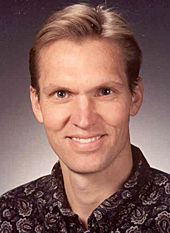AMES, Iowa -- Gregory Welk says past research by the Centers for Disease Control (CDC) has shown that people routinely underestimate what they eat and overestimate how active they are.
"So when we look at energy balance, people say they are eating well and staying active when they're really not," said Welk, an associate professor of kinesiology at Iowa State University.
Welk is leading a team of Iowa State researchers on a four-year project to provide a more precise way for people to determine their physical activity level. Funded by a $616,430 grant from the National Institutes of Health and conducted in partnership with Iowa State's Center for Survey Science and Methodology, the project is designed to ultimately develop more accurate ways to collect reliable information about physical activity in the population.
"We're trying to figure out where that error lies and where to adjust it to get better national data," Welk said. "The public health service knows physical activity is important for good health but it is hard to measure accurately. With the obesity epidemic, we all know that the only way to curtail the epidemic and get a better understanding is to figure out what causes people to be inactive or overeat."
In order to track the average physical activity level of the country's population, Welk and two ISU statistics professors, Alicia Carriquiry and Sarah Nusser, are recruiting a representative sample of 1,200 adults from three diverse counties in Iowa. The subjects will be asked to wear an advanced activity monitor known as the Sensewear Pro (manufactured by BodyMedia Inc.). The monitor is worn on the arm and uses sensors to measure movement and heat produced from physical activity. The sensors assess how hard people are working and how fast they're moving. The data will then be downloaded into a computer to show physical activity over several days.
Through national surveillance data, the CDC annually attempts to track the average activity level and dietary intake of the population, but its researchers have found it difficult to receive accurate data due to false self-reporting.
"The concept of the study is to reduce measurement error in self-report measures of physical activity," said Welk. "This study has a potentially high impact because it could change the way public health researchers survey the population."
The ISU researchers will study demographic differences, breaking down data by body mass, age, gender, race, ethnicity and rural versus urban. They will also evaluate subjects by their time spent in different physical activities -- focusing specifically on moderate and vigorous activity, as well as leisure, household and occupational activities.
Welk says the researchers have the long-term goal of being able to jointly model what they learn about activity level together with diet so they can get a better idea of energy balance -- or calories in versus calories out. With better tracking of energy balance they hope to contribute to efforts to reduce the prevalence of obesity in society.
The researchers plan to complete the development of the survey instrument in the first year and to conduct the validation and calibration research over the subsequent two to three years.
